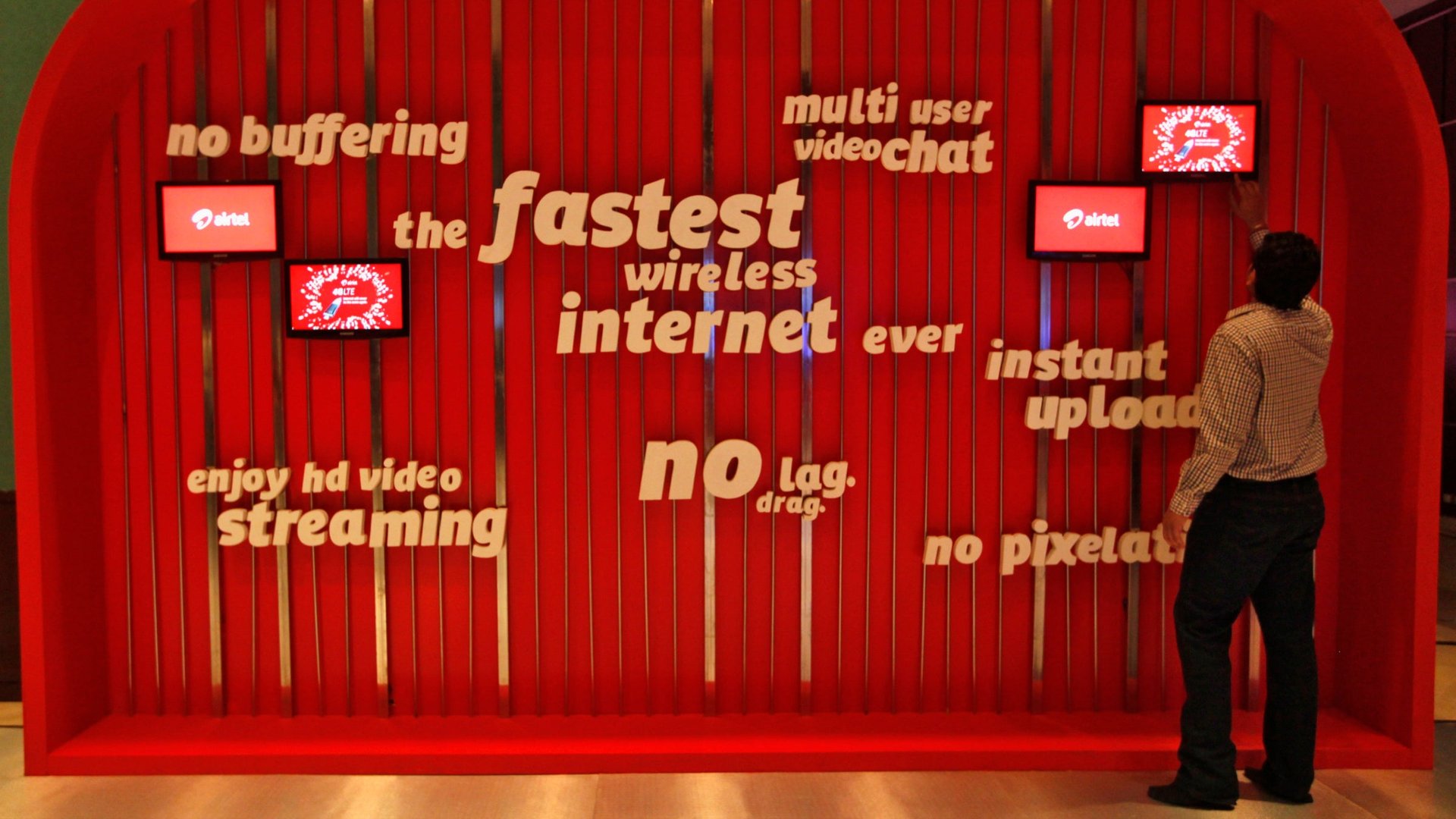Why the price of mobile data in India is suddenly plummeting
The price of mobile data in India is plummeting.


The price of mobile data in India is plummeting.
Some of India’s leading telecom operators—Bharti Airtel, Vodafone India, and Idea Cellular—recently slashed their mobile data rates by as much as 90%. Under the new schemes, customers can access the internet over 2G connections for as low as 1 paisa (less than 1 US cent) per 10 kilobytes. What’s driving the dramatic price war?
1. A massive market for smartphones
India is already the world’s third largest smartphone market, after China and the US. The number of Indians with smartphones grew 163% in the first quarter of 2013 from the same period a year ago, but there’s plenty more room for growth. Only 9% of the country’s 900 million mobile phone users have switched to smartphones.
2. Mobile data isn’t yet heavily used
Voice calls still generate the bulk of carrier revenues. Indian operators like Bharti get just 5% or so of their total revenue from data services, compared with 32% at China Mobile. The share of data in overall revenue for India carriers is expected to soar to 20% by 2017, according to Fitch Ratings.
3. A new competitor looms
Incumbent players are also trying to lock in as many consumers as possible before the entry of India’s richest man, Mukesh Ambani, into the 4G market. Ambani’s Reliance Jio Infocomm, which got nationwide broadband spectrum in 2010, plans to start operations by the end of the year.
Ambani revolutionized the Indian telecom market a decade ago, when a company he controlled sold handsets for an initial payment of just around $10. His reentry into the telecom market is likely to be equally disruptive. Ambani has already indicated that he will offer affordable rates, and sources have told Reuters that he is in talks with Samsung and others for 4G devices that cost under $85. The low prices may entice consumer to shift to 4G, which offers faster downloads and better connectivity.
4. Phones are getting cheaper, too
The handset market is also witnessing a fierce price battle. Between 75% and 80% of smartphone sales come from devices priced under 10,000 rupees, and local companies such as Micromax and Karbonn Mobiles, have seen their market share rise to almost 30%, from less than 3% a year ago.
Samsung, which remains the market leader with a third of all sales, caters to all sections of the market, offering low-end price competitive models as well as the flagship Galaxy S4. Apple, too, changed its strategy to break into the market that’s driven by low-cost devices. The company announced an installment plan in February, and since then has seen its monthly sales rise by 400%, according to Credit Suisse.